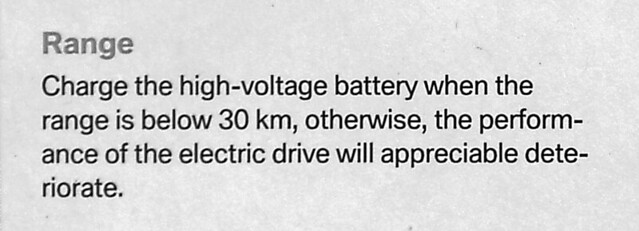Can any experienced EV owners please explain what is best practice for charging the car to keep the battery in best condition over it's lifetime ?
Are there any good reference articles online about this ?
Some questions I have include
1. Is it best to reduce the ampage delivered by the charger if you don't need a fast charge ? The domestic wallbox can charge at up to 7.4kw (32A) but you can configure the car to reduce this current. Is it a significant benefit to do that ?
2. Is it best to avoid charging up to 100% if not required ?
3. Is it best to run the battery down to low charge levels before recharging ?
The only thing I could find in the handbook about this was this paragraph.

Any advice would be appreciated.
Are there any good reference articles online about this ?
Some questions I have include
1. Is it best to reduce the ampage delivered by the charger if you don't need a fast charge ? The domestic wallbox can charge at up to 7.4kw (32A) but you can configure the car to reduce this current. Is it a significant benefit to do that ?
2. Is it best to avoid charging up to 100% if not required ?
3. Is it best to run the battery down to low charge levels before recharging ?
The only thing I could find in the handbook about this was this paragraph.

Any advice would be appreciated.



